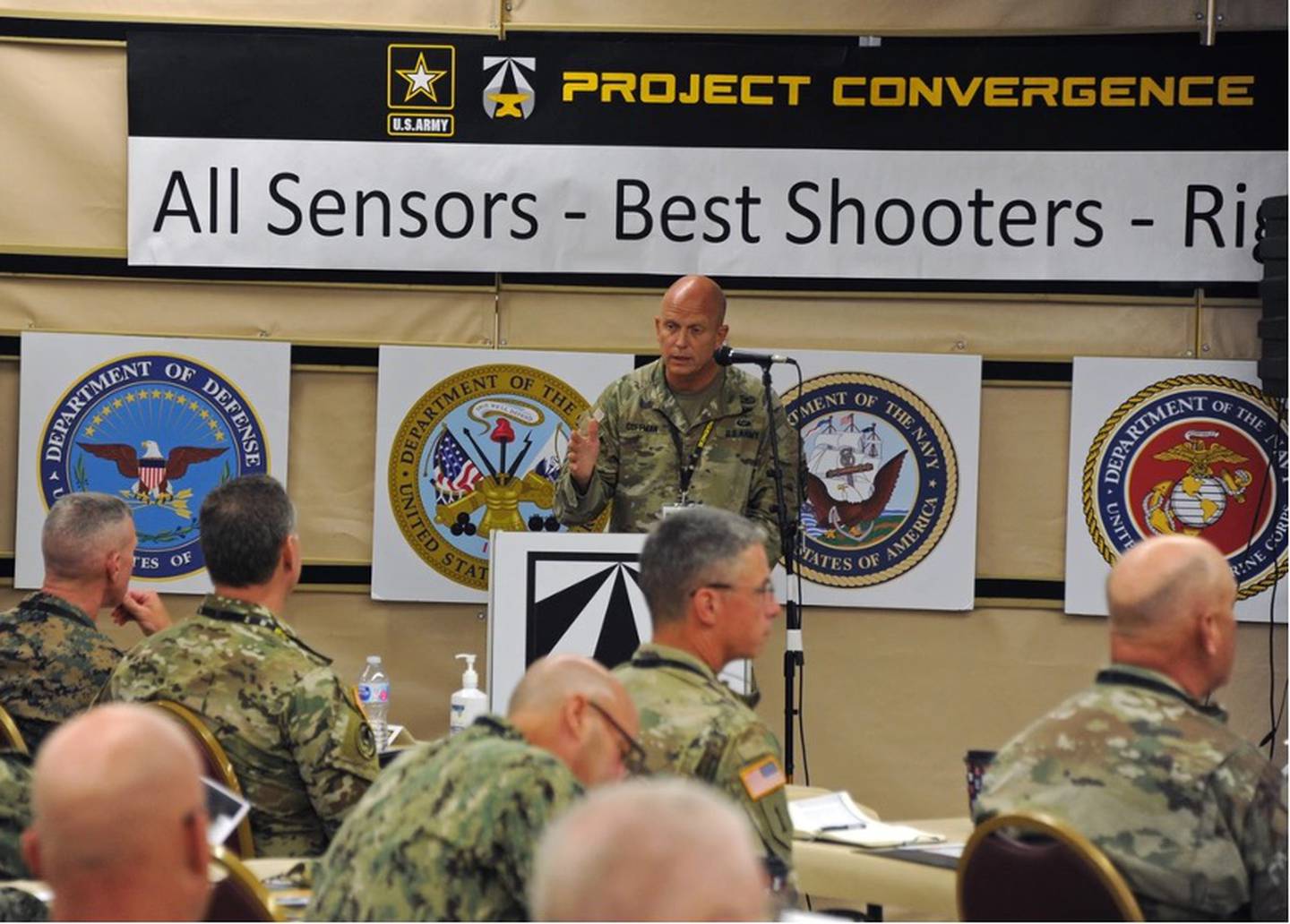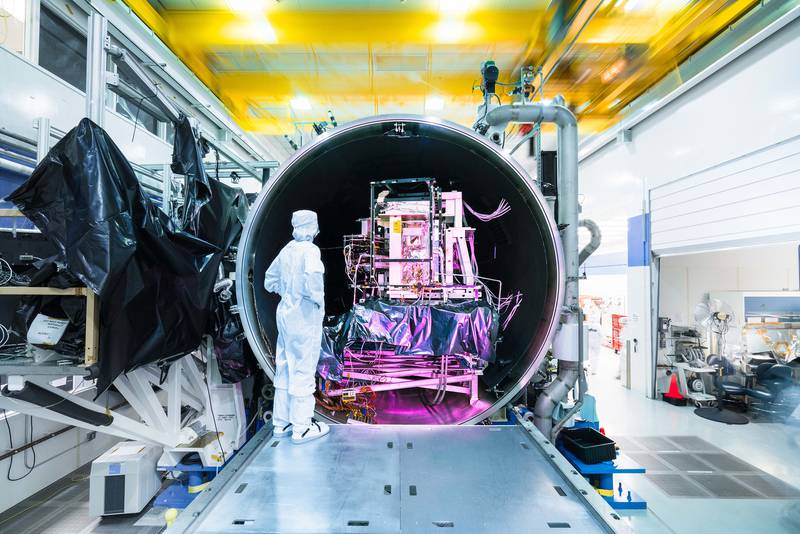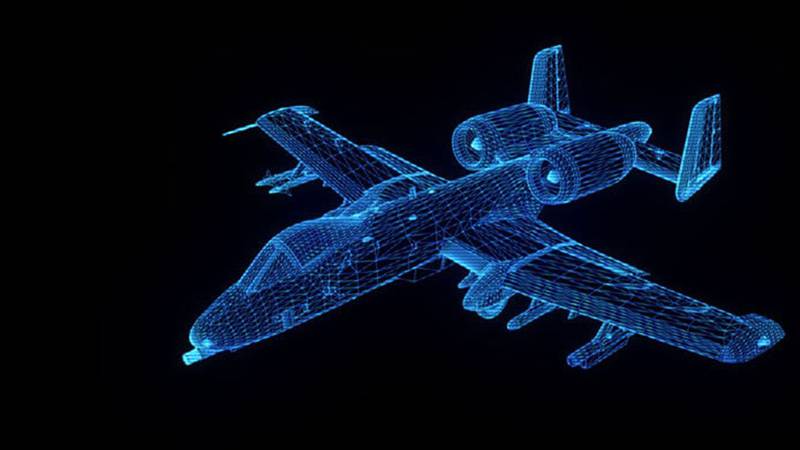By Defense News staff
Earlier this year, Secretary of Defense Lloyd Austin signed off on the Joint All Domain Command and Control (JADC2) strategy, which intends to accelerate the decision loop between sensor and shooter using a network architecture that operates across the services. Project Convergence, the Army’s campaign of learning, is the latest effort to bring JADC2 to fruition by integrating technologies that operate at multi-domain scale and speed.
Defense News spoke to Scott McGleish, executive director, Space and C2 Systems for Raytheon Intelligence & Space, about JADC2, considerations for how to implement it across the services, as well as the recent shift in leveraging open-source capabilities from industry.
DEFENSE NEWS: Lt. Gen. Dennis Crall, who we know has played a critical oversight role in developing this strategy, described JADC2′s creation as a recognition that US forces must be able to operate at the “speed of relevance.” What do you think he’s alluding to there, and what are some of the factors responsible for making near real-time decision-making a top priority?
JADC2 is the DoD’s vision for a future command and control network that will connect the battlespace across every domain. It will give military commanders and operators the ability to make decisions faster than ever before.
Every domain — sea, air, land, space, cyber and even the electromagnetic spectrum will be contested in the modern threat landscape. Victory will depend on rapid access to data to make more informed and faster decisions.
Our security community’s urgent need to implement JADC2 is in direct response to the changing battlespace dynamics outlined in the U.S. National Defense Strategy. The strategy emphasizes the need for cutting-edge capabilities that will enable the U.S. military in collaboration with its allies and partners to operate at the “speed of relevance” — with an overarching goal to deter and defend against sophisticated peer threats.
Adversaries now have offensive reach capabilities that have to be countered with different approaches and technology solutions to give the joint force and partners the decision advantage. Speed, obviously, will determine the mission’s success in future wars and it will require rapid decision making to outpace those peer threats. It’s going to require inventive approaches with JADC2, [being able to] combat our adversaries’ military advances, survivability, and integrated multi-domain technologies.
Industry is developing the foundational technologies today that will bring JADC2 to life. Our strengths are in space, protected communications, cyber, advanced sensors, and software solutions. These areas align with the underpinning capabilities for JADC2 – from applying DevSecOps to engineering the sensor grid. Our alignment means we are contributing to JADC2 across our technology portfolio.
DEFENSE NEWS: With JADC2, there’s a focus on using open-source technology to leverage innovations from across industry. At the same time, companies spend a lot of time and money to develop intellectual property. How do you balance IP and open standards, as well as concerns about vendor lock-in, when partnering with the DoD on JADC2 efforts?
We’re designing many technologies with open standards that can contribute to JADC2 such as the TITAN solution [Tactical Intelligence Targeting Access Node] for the Army. An open-systems architecture will be key to unlocking and integrating data across systems — legacy systems and new systems. At the end of the day, this has got to tie together seamlessly. That’s a challenge because there’s a lot of legacy systems. So how does that come forward?
Going to an open architecture — the APIs [application programming interface], the GUIs [graphical user interface] — that’s going to be critical. We’re proactively adopting this type of standard. It ensures our customers can seamlessly replace or update common components to operate in critical missions and in certain domains. We want to give them the ability to utilize it themselves and make changes, and not restrict the environments they work in and deal with.
[With TITAN], that’s basically taking satellite or any type of sensor feed and bringing it through what we might call the “brain” of it to harness all those capabilities from an A/ML perspective, from a data ingest perspective, from a 3D point cloud, and giving that capability to put long-range precision fires at the combat team level. TITAN is being designed to be very flexible, extensible, modular and scalable. It gives us the ability to give the commander enough time to react and put automation in play, and still have the human in the loop. You don’t remove that human in the loop, but you speed up the decision-making process so the OODA loop is much quicker.
DEFENSE NEWS: What are some of the most exciting developments you’ve observed among the services that are bringing JADC2 to reality?
DoD is about to unveil its Joint All Domain Command and Control implementation plan. The plan will be linked to the U.S. military departments’ supporting JADC2 initiatives such as the U.S. Army’s collaborative initiative with the U.S. Air Force, Project Convergence.
The U.S. Army launched Project Convergence last year with the U.S. Air Force to test JADC2 capabilities. Project Convergence will lay the groundwork for how the Army’s modernizes its force to conduct multi-domain operations.
Beyond TITAN, RI&S is contributing other technologies to operationalize JADC2 for the Army with the Electronic Warfare Planning and Management Tool, or EWPMT.
EWPMT has a very comprehensive, situational understanding of the electromagnetic spectrum and what that provides for electronic warfare officers: the ability to plan, coordinate, synchronize, manage, deconflict EW and spectrum management ahead of and during mission. It gives that command and control ability in assets hosted at the network level.
These solutions demonstrate the variety of technologies needed for the system of systems approach for JADC2. They will aid the joint force and the Army alike to accelerate decision making in the future fast-paced battlespace.




